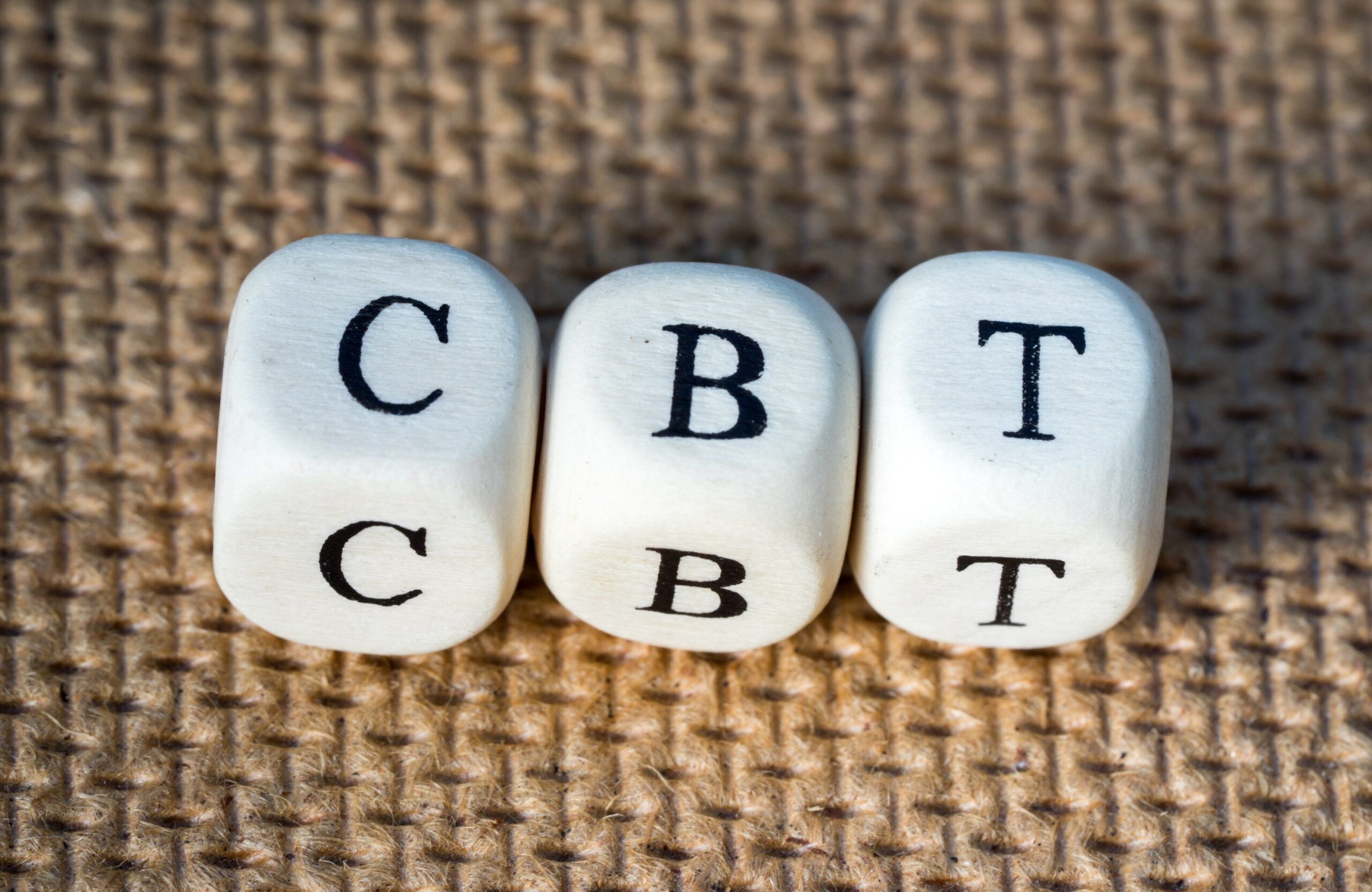Imagine this: your heart races, your chest tightens, and a surge of dizziness leaves you gasping for air, feeling dizzy and disoriented. Sweat beads on your skin as an overwhelming sense of doom takes over, like something terrible is about to happen. This isn’t just anxiety. It’s a panic attack, and it’s more common than you might think, affecting up to 11% of Americans each year.
The good news? You’re not powerless. Cognitive Behavioral Therapy (CBT) for panic attacks is widely recognized as the most effective treatment, helping more than 80% of individuals who complete therapy find lasting relief by breaking the cycle of fear and avoidance.
Understanding Panic Attacks and Panic Disorder
Panic attacks are sudden, intense episodes of fear that cause overwhelming physical symptoms without any real threat. Common signs include chest pain, abdominal distress, tingling sensations, shortness of breath, a racing heart, dizziness, and a sense of detachment or losing control.
Many individuals experience panic attacks due to high stress levels, increased sensitivity to bodily sensations, and strong physiological responses to stress. Although these episodes are usually brief, their intensity can leave a lasting impact. When someone begins to fear future attacks and avoids situations that might trigger them, it can lead to panic disorder. This condition can significantly affect daily life and emotional well-being.
The Panic Cycle: What Keeps Attacks Coming Back
Panic disorder doesn’t develop randomly. It follows a predictable pattern that psychologists call the “panic cycle”:
- Trigger: A physical sensation, thought, or situation activates the nervous system
- Misinterpretation: The person catastrophically misinterprets these sensations due to cognitive distortions
- Anxiety: This misinterpretation causes increased anxiety
- More Symptoms: Heightened anxiety creates more physical sensations
- Further Catastrophizing: These new sensations reinforce catastrophic thinking
- Panic Attack: The cycle escalates into a full panic attack
- Avoidance: The person begins avoiding situations associated with panic
Understanding this cycle is crucial because CBT for panic disorder works by interrupting it at multiple points—changing how you interpret bodily sensations, reducing avoidance behaviors, and teaching skills to manage anxiety before it escalates.
The Science Behind CBT for Panic Attacks
Cognitive Behavioral Therapy (CBT) is the most effective panic control treatment, with around 80% of patients becoming panic-free after completing therapy. It uses a structured, evidence-based approach to break the cycle of anxiety by targeting the unhelpful thoughts and behaviors that trigger more panic attacks.
CBT helps individuals recognize catastrophic thinking, such as mistaking a racing heart for a heart attack, and teaches them to respond with more balanced thoughts. Techniques like cognitive restructuring, exposure, and breathing exercises are central to this process. Studies and brain imaging research show that CBT not only reduces anxiety symptoms but also changes brain activity linked to fear and emotional regulation.
Key CBT Techniques for Panic Attacks
Cognitive Techniques: Changing How You Think
Cognitive restructuring is a key part of CBT for panic attacks. It helps you spot automatic negative thoughts, such as assuming a racing heart means a heart attack, and replace them with more realistic, calming perspectives. Through cognitive restructuring, individuals gain a better understanding of their anxiety and develop more effective coping strategies. This shift reduces fear and interrupts the cycle of panic.
The process involves identifying anxious thoughts, recognizing patterns like catastrophizing, challenging those thoughts with evidence, and creating balanced alternatives. Many people use a panic diary to track situations, physical sensations, thoughts, anxiety levels, and healthier responses. This practice reinforces progress between therapy sessions.
Behavioral Techniques: Changing What You Do
While cognitive techniques address thinking patterns, behavioral strategies target the actions that maintain panic disorder, particularly avoidance behaviors.
- Exposure therapy: Exposure therapy reduces panic by gradually facing feared sensations and situations. It includes recreating physical symptoms and confronting avoided places, helping your brain learn these triggers aren’t dangerous.
- Breathing retraining: Breathing training helps calm panic by slowing rapid, shallow breaths that worsen symptoms like dizziness and tingling. Diaphragmatic breathing, or deep belly breathing, breaks the cycle and promotes relaxation during stressful moments.
- Progressive muscle relaxation: Progressive muscle relaxation involves tensing and then releasing different muscle groups to reduce physical tension linked to anxiety. With regular practice, it builds body awareness and helps you relax more easily during stressful moments.
- Grounding techniques: Grounding techniques help you stay present during a panic attack by shifting focus away from fear. A popular method is the “5-4-3-2-1” technique, where you identify five things you can see, four you can touch, three you can hear, two you can smell, and one you can taste.
Integrated Approaches for Maximum Effectiveness
Modern CBT for panic disorder often includes mindfulness and acceptance-based strategies to enhance its effectiveness. Mindfulness helps you observe thoughts and sensations without judgment, while elements of Acceptance and Commitment Therapy (ACT) teach you to accept discomfort instead of resisting it, reducing panic’s impact.
Setting SMART goals provides structure and keeps progress clear, while learning problem-solving skills helps manage daily stressors that can trigger panic attacks. Together, these tools support long-term recovery and resilience.
The CBT Treatment Process for Panic Disorder
What to Expect During Treatment
CBT for panic disorder typically follows a structured format spanning 12-16 weekly sessions. While the exact timeline varies based on individual needs, a typical treatment schedule might look like this:
| Phase | Sessions | Focus |
|---|---|---|
| Assessment | 1–2 | Understanding your symptoms, history, and goals |
| Education | 2–3 | Learning about panic, anxiety, and the CBT model |
| Cognitive Work | 3–5 | Identifying and challenging negative thoughts |
| Behavioral Work | 5–8 | Exposure exercises and skill-building |
| Relapse Prevention | 1–2 | Creating a plan to maintain gains |
CBT sessions follow a structured plan with clear goals and techniques. The first session involves an assessment and personalized treatment plan, while later sessions focus on reviewing progress, practicing CBT strategies, and setting homework. Between sessions, you’ll apply what you’ve learned through exercises like thought diaries, relaxation, or gradual exposure. Many people see improvement within just a few weeks.
Self-Help CBT Strategies
While working with a trained CBT therapist offers the most comprehensive approach, several self-help strategies can support your recovery:
- Daily breathing practice: Set aside 5-10 minutes twice daily to practice diaphragmatic breathing. Place one hand on your chest and another on your abdomen, then breathe so that only the hand on your abdomen moves significantly.
- Thought challenging worksheet: Create a simple table with columns for situation, anxious thought, evidence for and against the thought, and a balanced alternative thought.
- Gradual exposure practice: Create a hierarchy of feared situations, rating them from least to most anxiety-provoking (0-100). Start with situations rated 30-40 and gradually work up the list as your confidence builds.
- Coping cards: Carry index cards with calming reminders like “This feeling will pass” and “Panic attacks cannot harm me.”
CBT vs. Other Treatment Approaches
CBT is the most effective and well-researched therapy for panic disorder, offering a structured, evidence-based approach. While other therapies can help, especially when combined, CBT remains the gold standard for treatment.
Medication Options
SSRIs and SNRIs are the first-choice medications for panic disorder, helping reduce the frequency and intensity of attacks, though they may take a few weeks to work. Benzodiazepines offer quick relief but are best used short-term due to dependence risks. Combining medication with CBT often provides the most effective results, especially for more severe cases.
Alternative Psychotherapies
Several other therapeutic approaches show promise for panic disorder:
- Panic-focused psychodynamic psychotherapy (PFPP) explores how unconscious conflicts might contribute to panic symptoms.
- Eye Movement Desensitization and Reprocessing (EMDR) may help when panic disorder develops following traumatic experiences.
- Applied relaxation training (ART) focuses intensively on relaxation skills without as much emphasis on cognitive restructuring.
- Dialectical Behavior Therapy (DBT) can be particularly helpful when panic disorder co-occurs with emotion regulation difficulties.
- Mindfulness-Based Stress Reduction (MBSR) uses techniques like meditation and deep breathing to reduce stress by promoting present-moment awareness and easing panic triggers.
While these approaches have research support, none has demonstrated the consistent effectiveness of CBT across multiple large-scale studies.
Long-Term Management and Relapse Prevention
Recovery from panic disorder means more than stopping panic attacks—it’s about building long-term resilience. This includes recognizing early warning signs, maintaining CBT practices, continuing gradual exposure, and supporting mental health through exercise, sleep, stress management, and social connection. Periodic booster sessions with a therapist can also help prevent relapse during stressful times.
Finding the Right CBT Therapist
A strong therapeutic relationship is key to successful CBT. When choosing a therapist, look for someone licensed and trained specifically in CBT for anxiety, with experience treating panic disorder. Make sure their approach is structured, not just loosely CBT-based, and trust your comfort level during the consultation. Also consider practical factors like location, cost, scheduling, and insurance coverage. Most insurance plans cover CBT for anxiety disorders, and many therapists offer sliding scale fees if needed.
Conclusion
Panic attacks can feel overwhelming, but they are both manageable and treatable. Cognitive Behavioral Therapy (CBT) provides a clear, evidence-based path to relief by addressing the thought patterns, behaviors, and physical symptoms that keep the panic cycle going. With tools like cognitive restructuring, exposure therapy, breathing techniques, and mindfulness, CBT not only reduces symptoms but builds lasting resilience. Whether you’re newly diagnosed or have been struggling for years, recovery is possible—and closer than you think.
If you’re ready to take control of your panic and stop living in fear, Kieval Counseling in Massachusetts is here to help. Our compassionate, experienced therapists specialize in CBT for anxiety and panic disorders, offering personalized support that empowers lasting change. Contact us at 781-369-5644 to schedule a consultation and start your journey toward peace of mind and freedom from panic.
FAQs
What are the CBT techniques for panic attacks?
Key CBT techniques include cognitive restructuring, exposure therapy, breathing retraining, progressive muscle relaxation, and grounding exercises. Relaxation techniques, such as progressive muscle relaxation and guided meditation, are also key components of CBT for panic attacks.
What type of therapy is best for panic attacks?
Cognitive Behavioral Therapy (CBT) is considered the most effective therapy for panic attacks, with success rates around 80% for those who complete treatment.
How to do CBT for anxiety?
CBT for anxiety involves identifying negative thought patterns, challenging catastrophic thinking, practicing exposure exercises, and developing coping skills like deep breathing and mindfulness.
How do you manage panic attacks?
Manage panic attacks with deep breathing, grounding techniques, cognitive reframing, muscle relaxation, and gradual exposure to feared situations or sensations.





